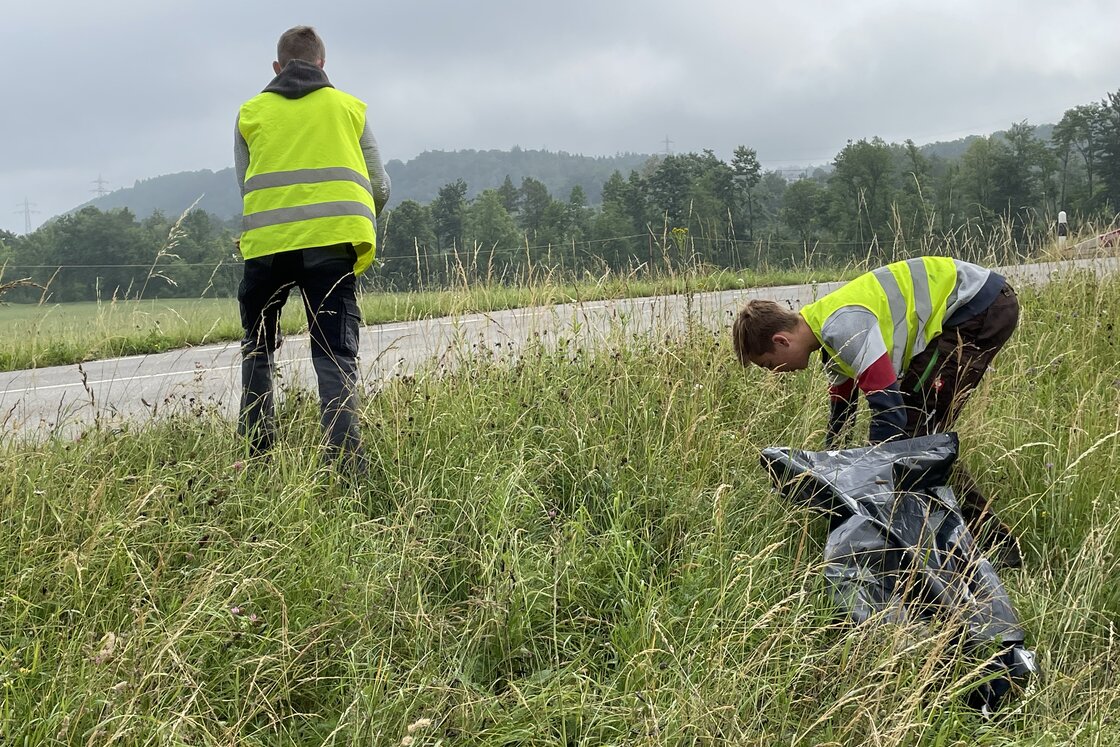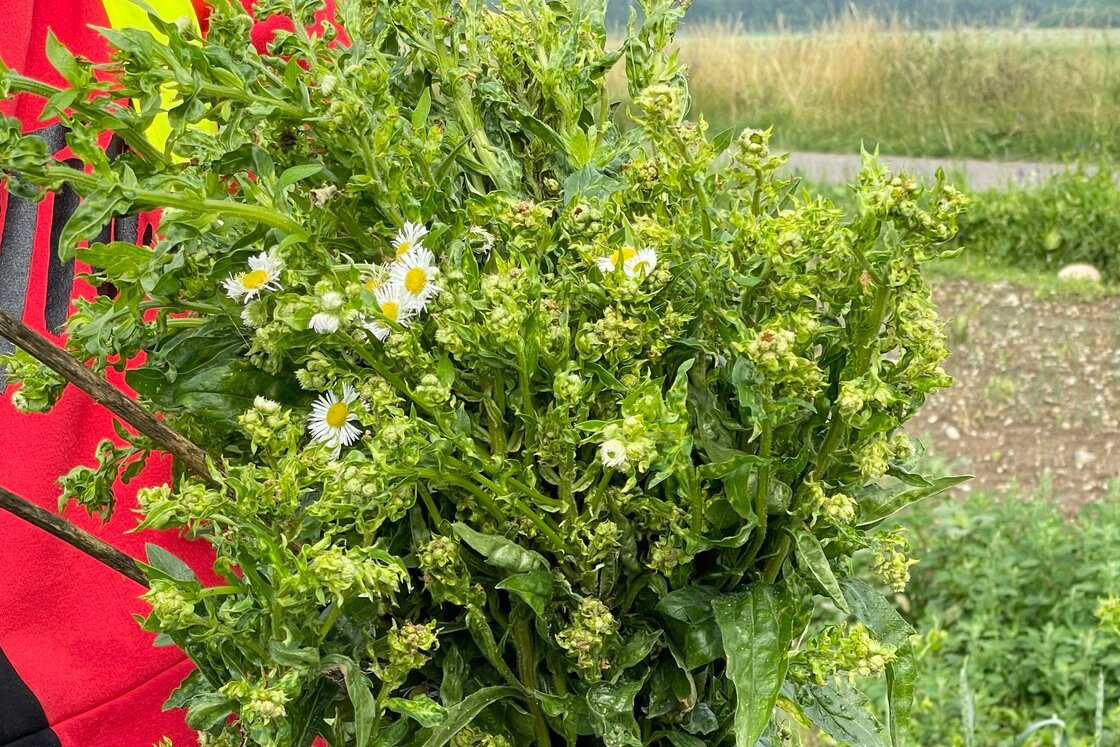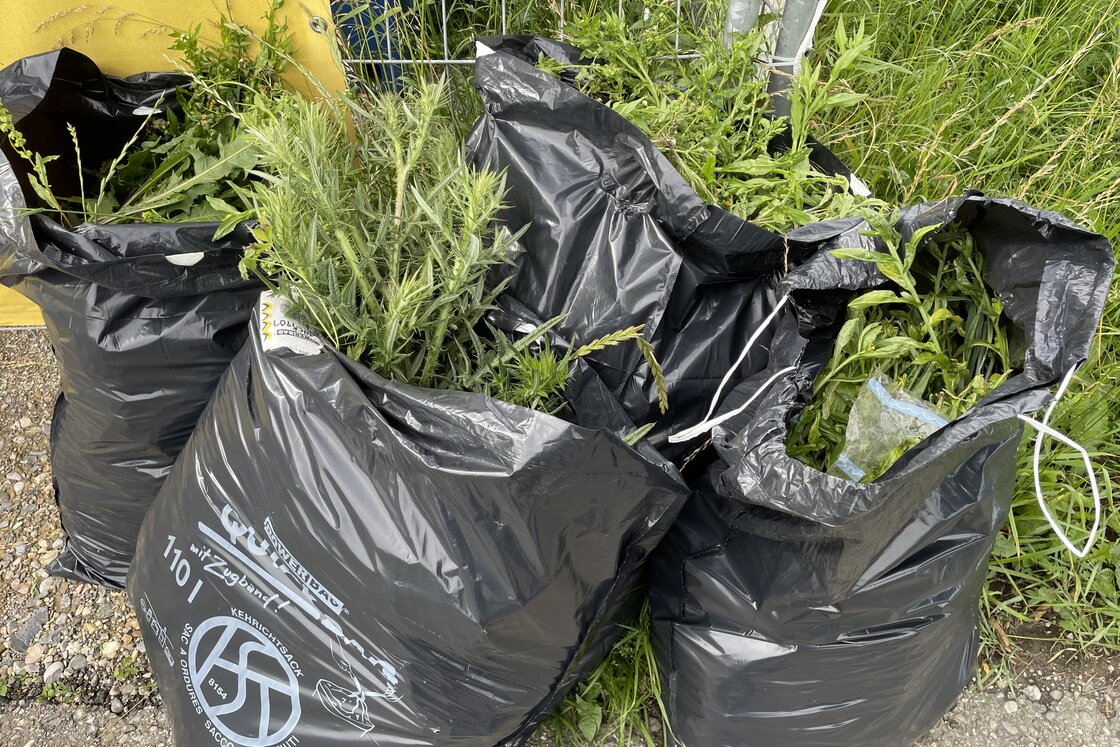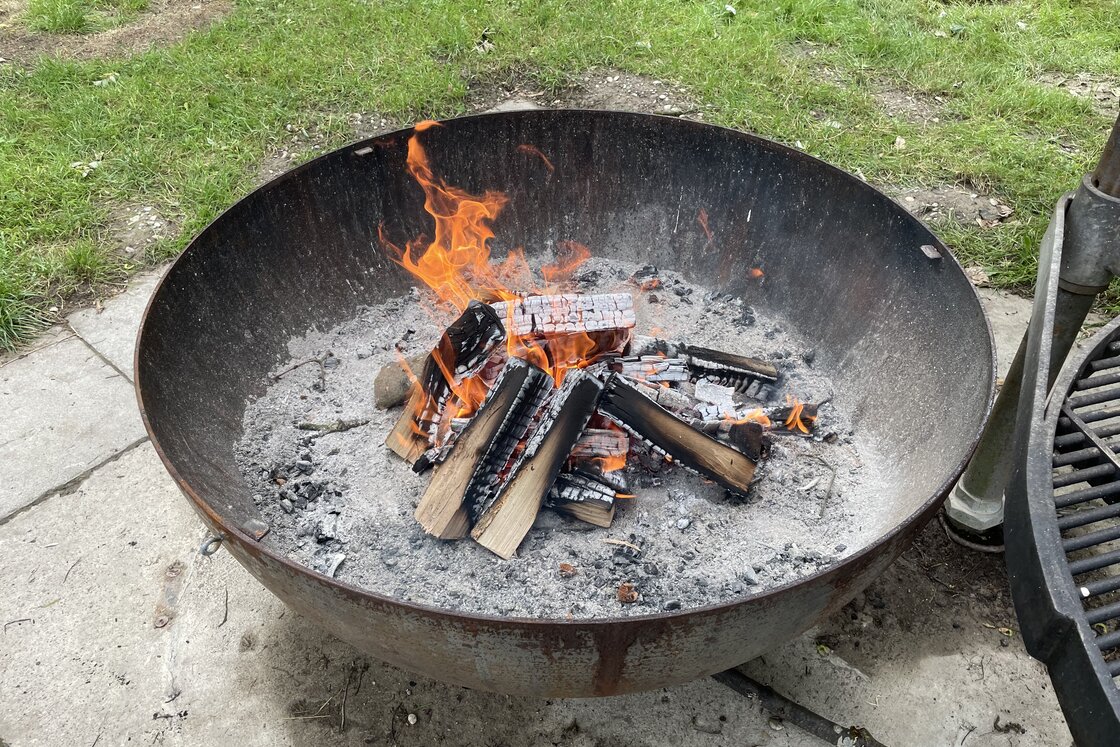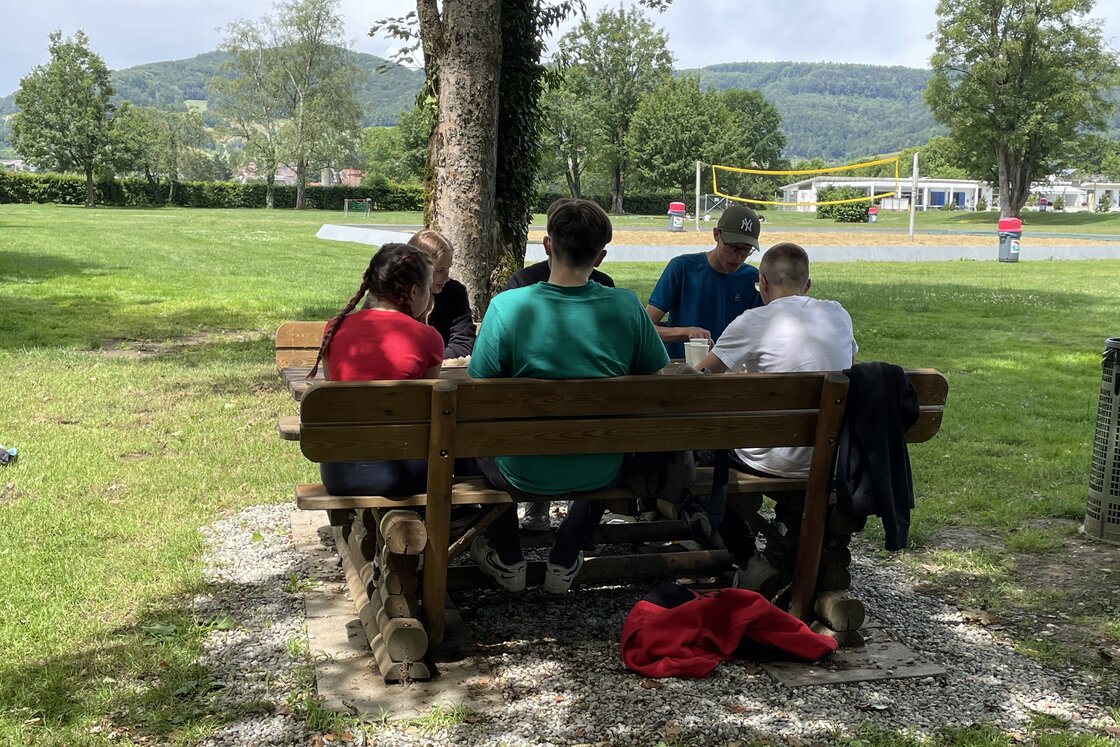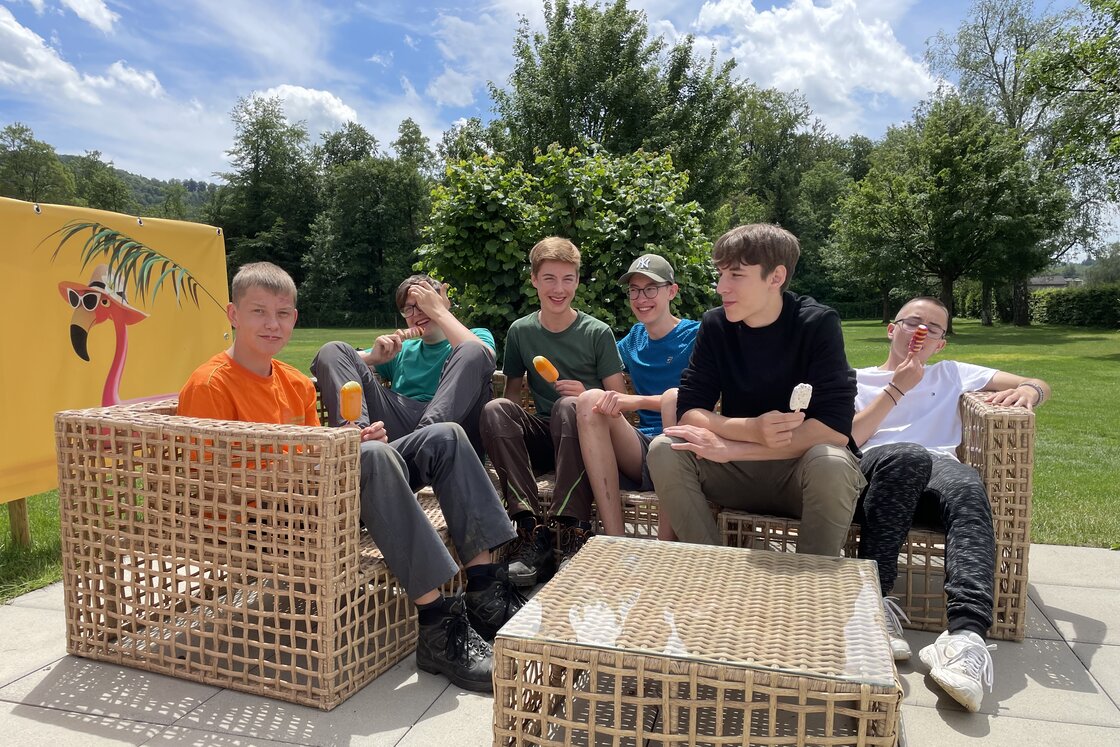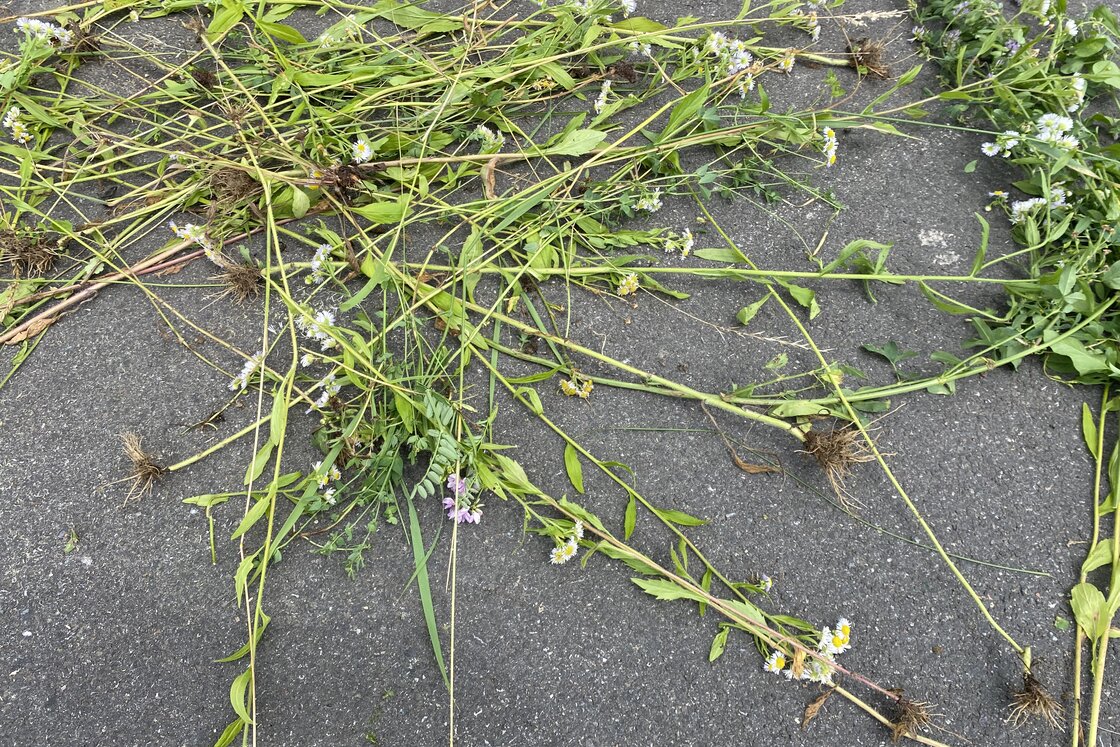
Removing the neophytes, 8 June 2022
Joining class 3 b of KSOS Schenkenbergertal school as they work in nature for nature
This is another engagement supported by EGK-Gesundheitskasse:
In keeping with the motto "Doing something together for nature" we got up close and personal with the fleabane neophyte
The motivated pupils teamed up with their class teacher Sandro Carucci to help Schinznach-Dorf building authority destroy the annual fleabane weed. It is an invasive neophyte.
Marco Locher from the building authority told us which plants we should uproot and place in rubbish bags. They were then destroyed in the incinerator. Neophytes cannot be disposed of with other garden waste, as they would just multiply.
There is plenty of harmful annual fleabane near Badi Schinznach between the bike path and the road. As Mr Locher showed us, the weed had already spread on agricultural land. Here as well, the class worked systematically and removed all the neophytes. It’s important to fully uproot the plant.
Reward for the workEGK is supporting the schoolchildren in this valuable work by making a contribution to the school camp in Interlaken at the end of June. EGK also offered the helpers apples, drinks, grilled sausages and ice cream.
What does the harmful fleabane look like?
- the plant is 30-150 cm long
- the upright, hairy stem branches at the top
- the leaves are arranged alternately
- the flower heads are white or pale pink ray florets with yellow disc florets in the middle
- it spreads via tiny seeds that fly through the air
If the plants are not yet in bloom, they can be confused with knapweed or types of daisy.

What are neophytes and how are they controlled:
- Neophytes are invasive plants that spread quickly and displace the native flora.
- There are about 18 known types of invasive neophyte.
- These species must not be cultivated. They may no longer be circulated as they are banned.
- The plants must be taken out by the roots and burned.

